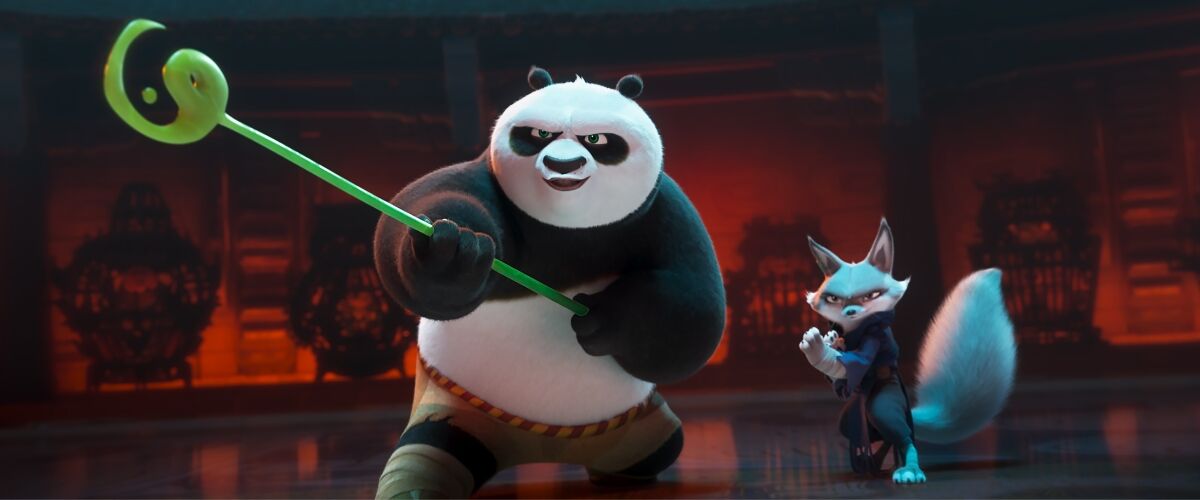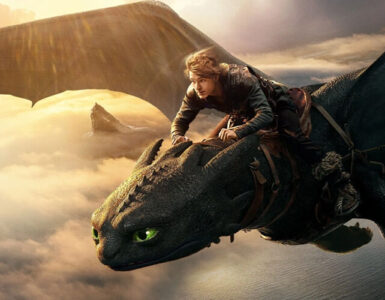Someone watched the original Kung Fu Panda (2008) and heard the line, ‘There is no secret ingredient.’, and used it as a foundation for a new sequel that could have used a lot more spice, a new chef and something special to get things going.
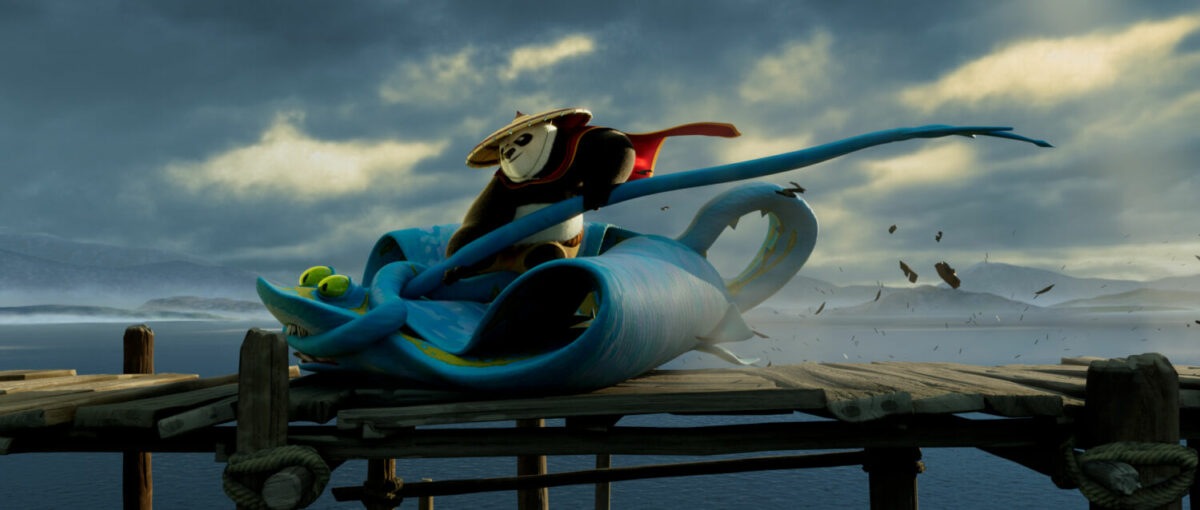
Emerging once more from the current depths of DreamWorks Animation’s slightly shallow creative wellspring, Kung Fu Panda 4 sees the return of Jack Black voicing the indomitable and ever-charming Po. This instalment of the beloved franchise aims to strike a balance between the martial arts comedy and fantasy elements that fans have come to adore since the series first catapulted into the hearts of audiences worldwide and is directed by Mike Mitchell of Shrek Forever After and Trolls fame, and brought to life by writers Darren Lemke, Glenn Berger, and Jonathan Aibel.
Eight years after the last entry, the film seeks to infuse the narrative with new vigour while honouring the legacy of its predecessors, much like how Puss in Boots: The Last Wish (2022) defied expectations and reinvigorated the Shrek franchise. The journey that began with Po’s unlikely ascension to the role of Dragon Warrior continues as he faces an entirely new kind of challenge. No longer merely battling foes of flesh and blood (or fur), Po is called upon Master Oogway (Randall Duk Kim) to embrace a destiny of spiritual leadership over the Valley of Peace. This evolution of Po’s character from warrior to potential sage is complicated by the emergence of the Chameleon, a villain whose shapeshifting abilities pose a unique threat to Po, and the artefacts that hold the Valley together.

Jack Black’s return as Po imbues the film with the familiar warmth and comedic brilliance that has become synonymous with the character. Yet, this latest journey is not just Po’s alone but also introduces Zhen, voiced by Awkwafina, a corsac fox whose cunning and agility make her both an irritant to Po and an indispensable ally in the quest to safeguard their home from destruction.
With the villains, each of the previous films in the franchise has raised the bar, from the nuanced villainy of Gary Oldman’s Lord Shen in the sequel to the entertaining presence of J.K. Simmons as General Kai in the third film, and audiences will embrace the addition of Viola Davis as the voice of the cunning Chameleon.
Kung Fu Panda 4 also reunites audiences with a host of returning characters, with Dustin Hoffman as the wise Master Shifu, and James Hong as Mr. Ping, Po’s adoptive goose father and Bryan Cranston as Li Shan, Po’s biological panda father.

But while the key ingredients of what defined the franchise before are back, Po, the unlikely martial arts hero with a penchant for dumplings and self-discovery is not the lead in this outing. Instead, the spotlight pivots towards Zhen, which already sparked a mix of anticipation and scepticism among fans when Awkwafina was cast. Yes, the same proliferating presence in many animated features including Disney’s Raya and the Last Dragon, Illumination’s Migration, and DreamWorks Animation’s The Bad Guys. The film’s narrative thrust appears to sideline its titular hero for a newcomer, a move that risks putting off those drawn to Po’s endearing clumsiness and heart.
As the storyline unfolds, it grapples with the dual narrative arcs of Po’s ascension to a spiritual leader and the emergence of a powerful new foe, the Chameleon. Davis delivers with a performance that, while compelling, leaves audiences craving a deeper exploration into her character’s motivations and backstory, a complexity that the screenplay hesitates to fully unravel.

The script, while ambitious, stretches itself thin in trying to navigate Po’s personal journey alongside this looming threat. The Chameleon’s unique ability to steal powers and shapeshift introduces a fascinating dynamic to the combat sequences, yet this mechanic rehashes concepts previously explored with General Kai’s ability to steal chi (also known as one’s life force), diminishing the freshness of the conflict.
Moreover, the film’s reliance on combat scenes, particularly the climactic battle where Po confronts a malevolent mirror of himself, though visually stunning, underscores a thematic repetition within the franchise. This encounter, filled with high stakes and dramatic tension, inadvertently highlights the film’s struggle to innovate within its established formula. Kung Fu Panda 4 endeavours to pay homage to its roots yet chart new territory at the same time, yet it often finds itself ensnared in the shadow of its own legacy, attempting to juggle too many elements without fully realising its ambitious narrative potential, leading to an anticlimactic ending.
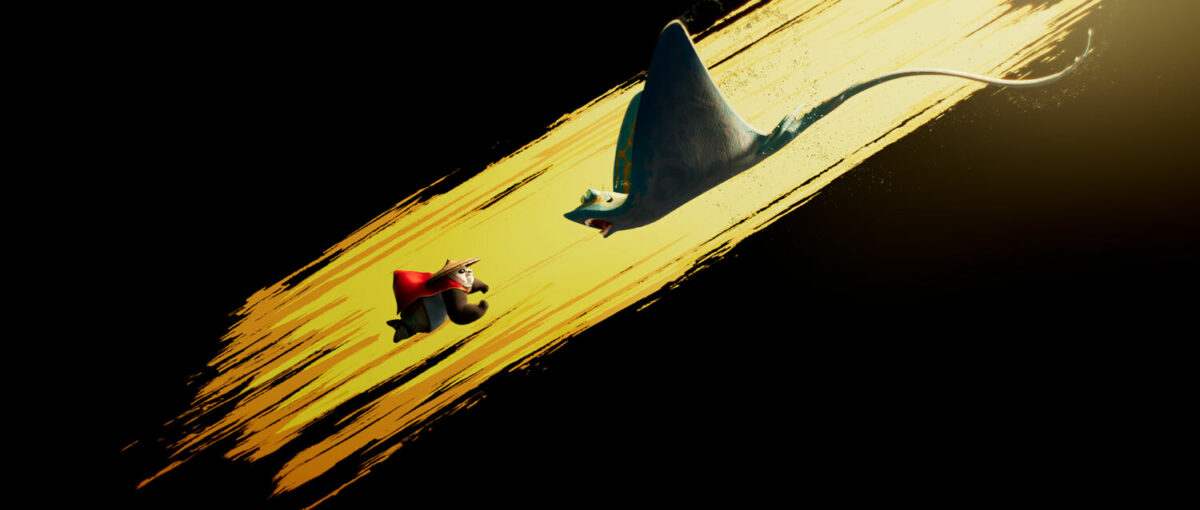
A glaring omission that reverberates throughout Kung Fu Panda 4 is the absence of the Furious Five, a quintet of skilled warriors and the cornerstone of the series that provided much of its emotional and thematic depth. Their absence not only creates a void in the story’s fabric but also diminishes the film’s connection to its predecessors. The dynamic between Po and the Furious Five, especially the relationship with Tigress (played by Angelina Jolie in the previous films), offered a rich exploration of balance, contrast, and camaraderie, but they also held a deeper symbolic meaning within the franchise.
Beyond their great chemistry, the Furious Five represent the core kung fu styles of the film’s universe. They are a legendary group of five warriors, each having mastered one of the ‘Five Animal’ styles of Hung Ga kung fu: Tiger, Snake, Crane, Monkey, and Praying Mantis. Their absence suggests a significant shift in the story’s focus to newer characters while sidelining the intricate relationships that defined the series, a pivot that may alienate long-standing fans.
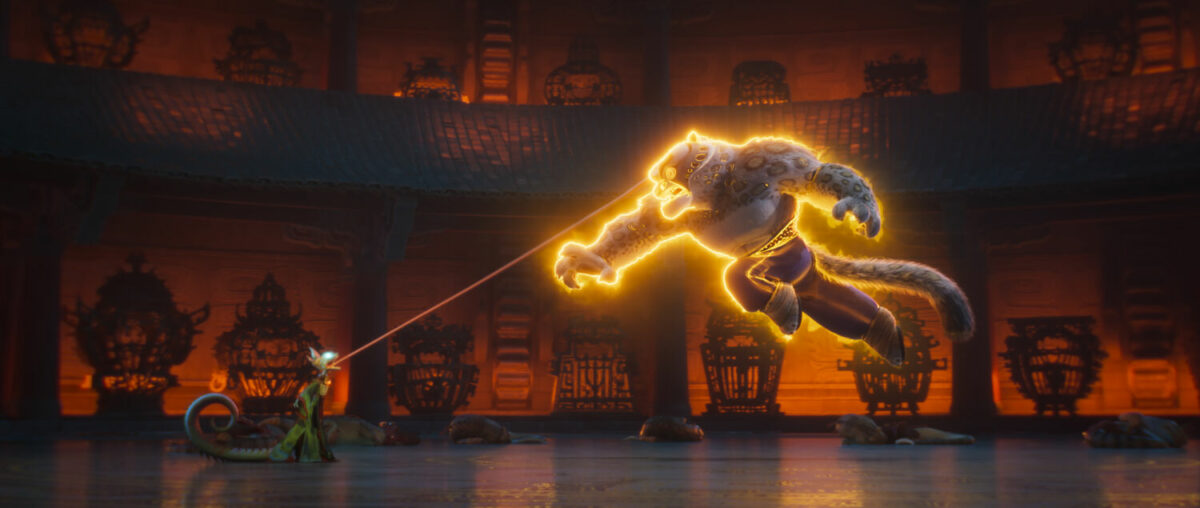
The film’s narrative also stumbles in its portrayal of returning villains. The resurrection of Tai Lung, voiced by the prolific Ian McShane, only for him to be quickly overpowered by the Chameleon, exemplifies a concerning trend within the franchise of diminishing established characters to elevate new adversaries. This choice, aimed at showcasing the Chameleon’s dominance, instead comes off as a disservice to the franchise’s lore and its dedicated fanbase. The under-utilisation of other beloved villains like Lord Shen and General Kai, reduced to mere wordless shadows of their former selves, further exacerbates this issue, rendering their appearances inconsequential and lacking in the depth that once made them formidable foes.
Yet, amidst these narrative and character dynamics, Kung Fu Panda 4 does deliver on the visual storytelling and comedic flair that fans have come to expect from the series. The animation, smoother, richer and more vibrant than ever, paints the Valley of Peace in swathes of mesmerising colour and life. Action sequences leap off the screen with a dynamism that rivals, and at times surpasses its predecessors. The infusion of new supporting characters, such as Ke Huy Quan’s armadillo Han and Ronny Chieng’s Fish, injects a fresh vibrancy into the world.
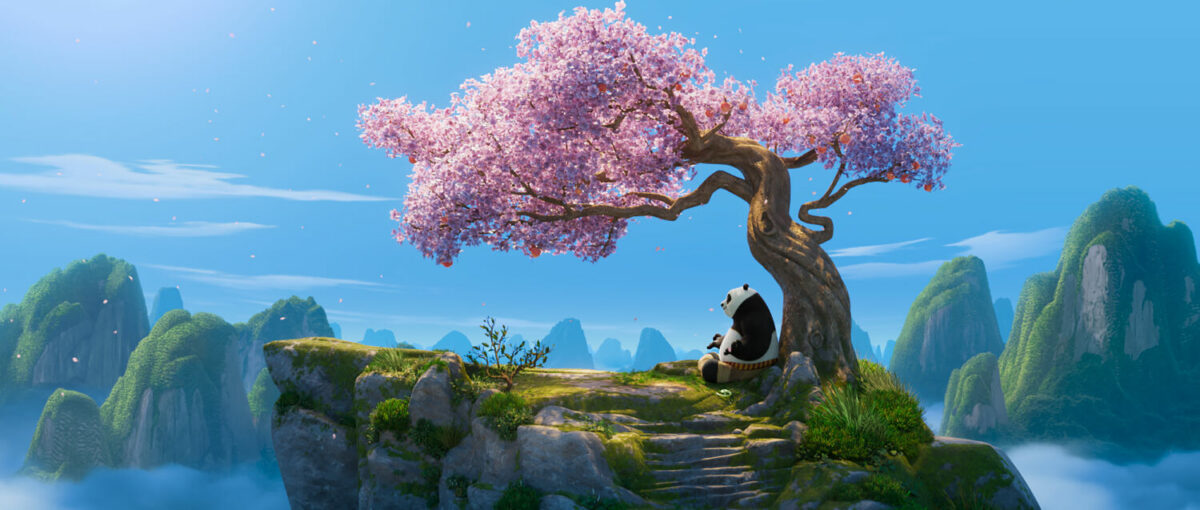
Amidst the highs and lows, one aspect of Kung Fu Panda 4 that unequivocally stands out is its musical score. Hans Zimmer, fresh off his success on Dune: Part Two, alongside Steve Mazzaro – both talents returning from the first three films – take the helm of composition, weaving auditory magic that elevates every scene. Their score lends an emotional depth and epic scale to Po’s journey, harmonising well with the film’s visual grandeur.
In a delightful twist, the end credits roll to a viral, hilariously unexpected cover of Britney Spears’ ...Baby One More Time by Tenacious D, an American comedy rock duo formed by actors Jack Black and Kyle Gass, injecting a final note of whimsy and showcasing Jack Black’s dual talents as both voice actor and musician. This musical choice not only serves as a nod to the franchise’s playful spirit but also leaves the audience with a lingering sense of joy long after the screen fades to black.
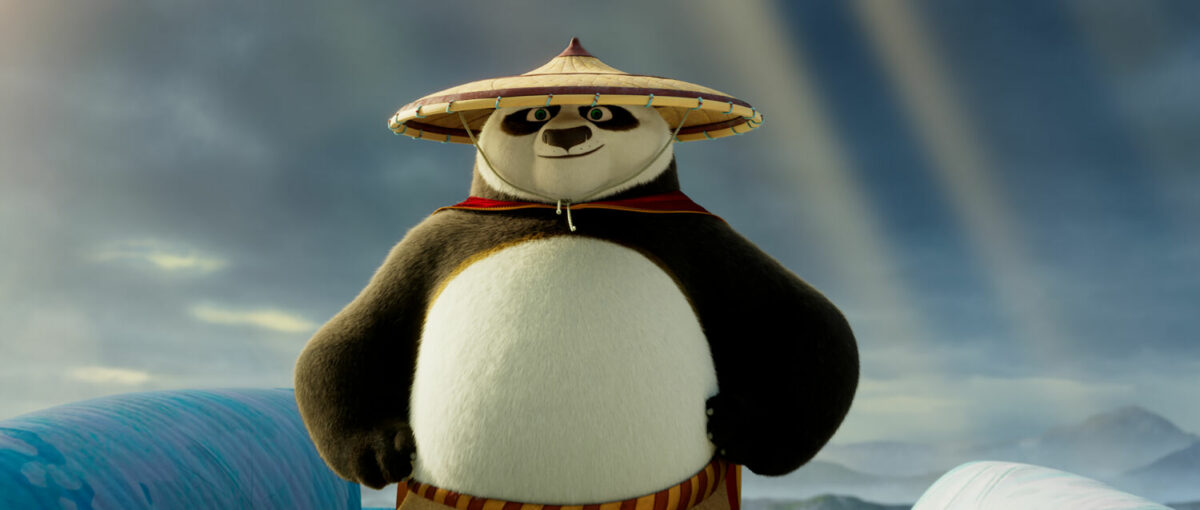
As the curtain falls on this latest instalment, Kung Fu Panda 4 stands as a moment of reflection on the franchise’s path forward. While it delivers moments of genuine humour and heartwarming action, the film’s ambitious narrative threads weave a story that yearns for the depth and camaraderie of its predecessors. The task ahead for the franchise is not just to tell new stories but to rekindle the magic that made Kung Fu Panda a beloved pillar of animated storytelling, ensuring that its legacy endures with the same heart and heroism that defined its beginnings.
Kung Fu Panda 4 is now showing in cinemas.
GEEK REVIEW SCORE
Summary
Kung Fu Panda 4 juggles nostalgia with new elements, offering humour, action, and heart. However, its ambitious narrative struggles to blend seamlessly, leaving the film feeling incomplete. While the future holds promise, the focus on new characters and themes risks sacrificing the core dynamics that made the franchise a standout.
Overall
5/10-
Story - 6/10
6/10
-
Direction - 4/10
4/10
-
Characterisation - 5/10
5/10
-
Geek Satisfaction - 5/10
5/10

